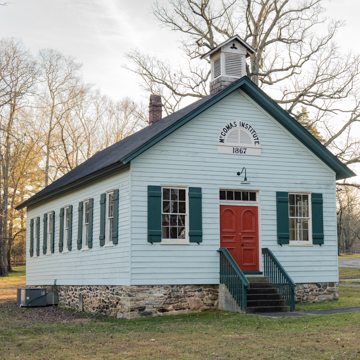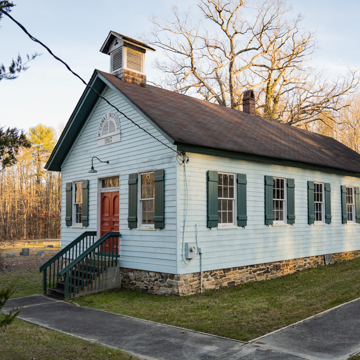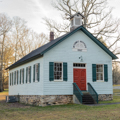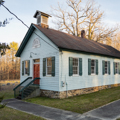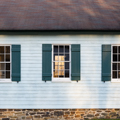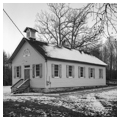McComas Institute is a surviving example of a Freedmen’s Bureau school built by the federal Bureau of Refugees, Freedmen, and Abandoned Lands created in 1865 as part of the War Department. It was charged with assisting newly freed enslaved people in the southern states and the District of Columbia. As a slaveholding Union border state, Maryland was not included in the 1863 Emancipation Proclamation. Instead, slavery was outlawed on November 1, 1864, with the adoption of a new state constitution. In Maryland the Freedmen’s Bureau was mainly involved with education and legal matters for both the formerly enslaved and the large free Black population. Constructed in 1867, McComas Institute was named for local abolitionist and tobacco merchant George McComas.
Across Maryland, Freedmen’s Bureau schools provided new opportunities for public education in a segregated system that had limited facilities in this period. McComas was one of three Freedmen’s Bureau schools built in Harford County and the most intact survivor. Berkley School (also known as Hosanna School) in Darlington, a two-story frame structure that included a church and community meeting rooms, was reconstructed in 2005 and now houses the Hosanna School Museum. Greenspring (or Hopewell) School was burned in 1926, reputedly by the Ku Klux Klan.
McComas Institute is a long rectangular wood building with an entrance on the short gable end and a small bell cote over the entrance. The interior has wall-mounted chalkboards in the larger of the two rooms. When the Freedmen’s Bureau was discontinued in 1872, McComas Institute became part of the Harford County Public School system. It continued to serve as a “colored” public school until it was closed around 1935. In later years the school was taken over and cared for by the neighboring Mount Zion Methodist Church. McComas Institute serves as a reminder of the complicated history of education for African American Marylanders in the immediate aftermath of the Civil War.
References
Deeney, Susan M., and Natalie Shivers, “McComas Institute,” Harford County, Maryland. National Register of Historic Places Nomination Form, 1979. National Park Service, U.S. Department of the Interior, Washington, D.C.
Weeks, Christopher. An Architectural History of Harford County, Maryland. Baltimore: Johns Hopkins University Press, 1996.







